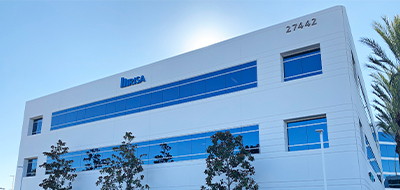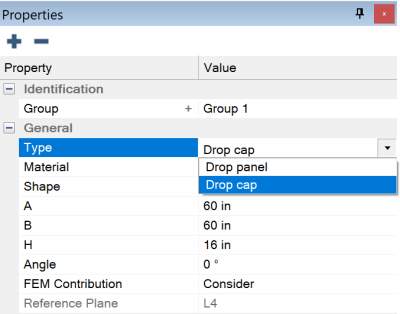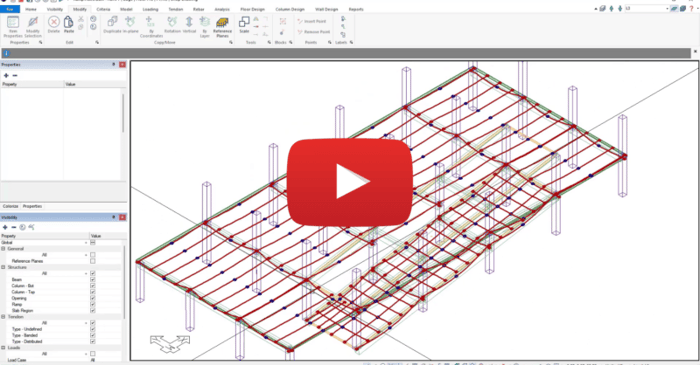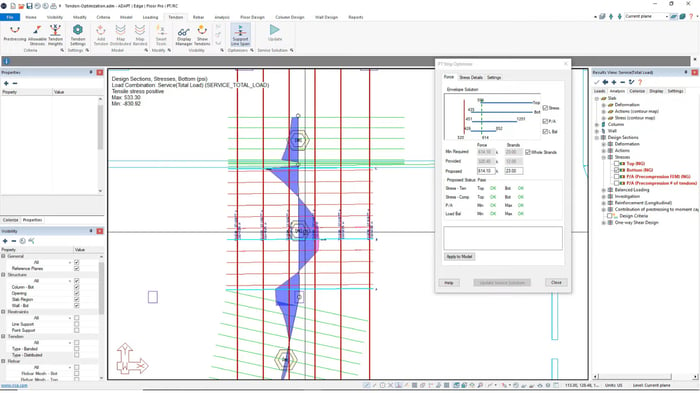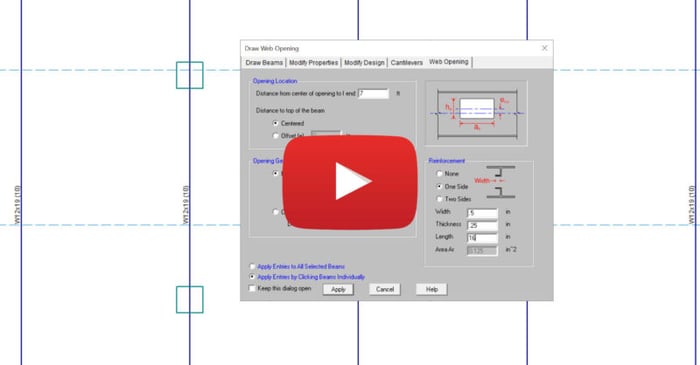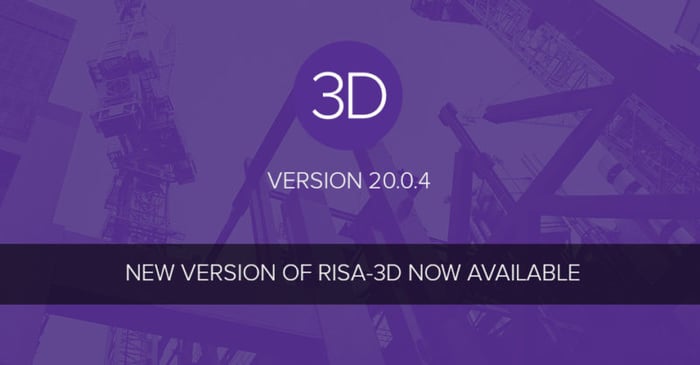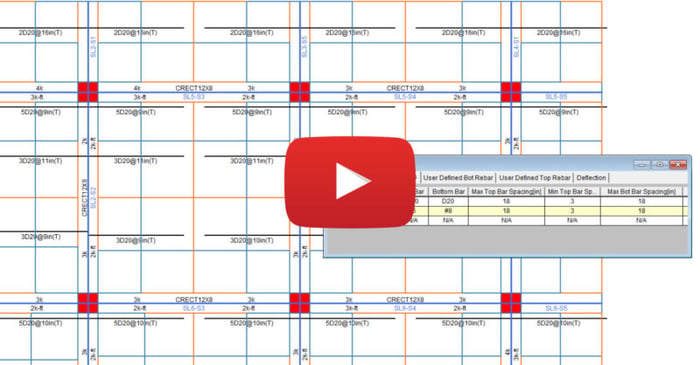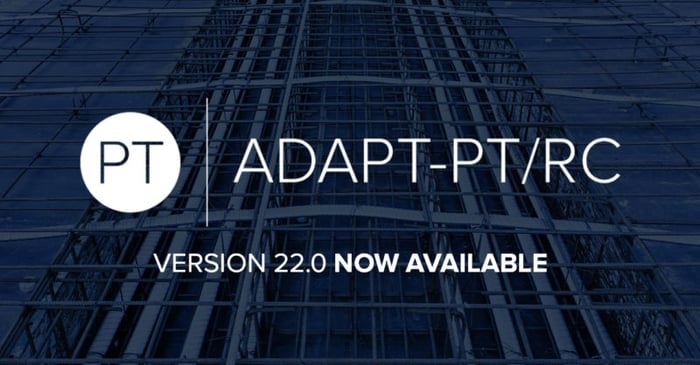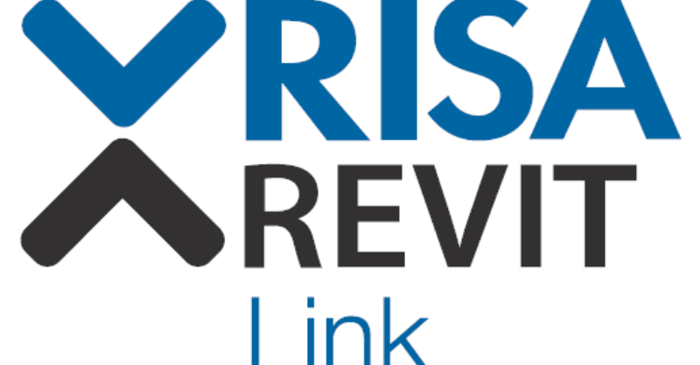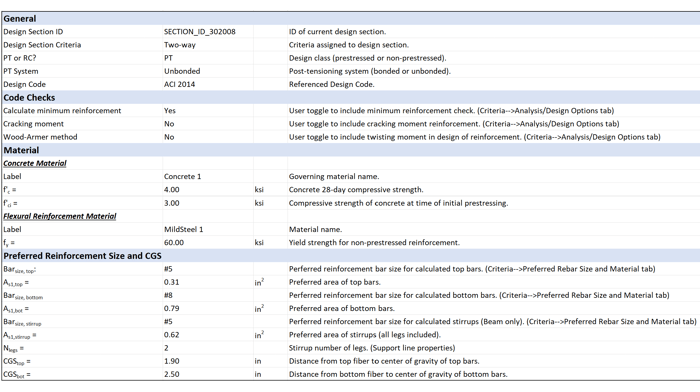
November 21, 2022
Detailed Calculation Report for Minimum Required Reinforcement
Users can now generate an Excel spreadsheet for each design section showing a summary of the design section properties, reinforcement, and moment demand and capacity. These detailed calculation reports currently include minimum required reinforcement as shown on the As,min tab of the spreadsheet....



